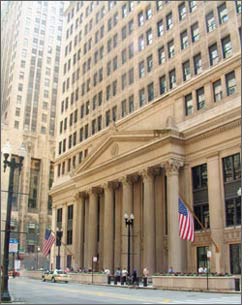Macroeconomics activity and demand/Further Issues around fiscal policy
From WikiEducator
Jump to: navigation, search
A macroeconomic goal: Employment rate
In this section we'd like you to read three short texts on issues surrounding fiscal policy:
- Read Section 5 of Macroeconomics, Chapter 17 from Openstax College, which looks at Automatic Stabilizers and explains actions the government enacts to adjust the economy.
- Use Section 3: Issues in Fiscal Policy, from Principles of Macroeconomics: "Chapter 12, as an opportunity to become familiar with the problems and controversies involved in choosing and implementing fiscal policy. Can you think of an example of "crowding out" that you have read about?
- Read only the portion of Section 2 of Chapter 11: Problems and Controversies of Monetary Policy from Principles of Macroeconomics, which describes the several lags involved with the use of macroeconomic policy. Among them are the recognition lag, the decision lag, and the implementation lag. You need to place each of these lags in a timeframe and gain information about the complexity of action or inaction.
Rationale for GDP: A monetary measure
Now take this short quiz to see if you understood the readings, in each case, the try to answer the following questions about financial policy implementation.
- Data on the economy which is more accurate and more speedily available should enhance the use of fiscal policy by reducing the length of the recognition lag..
- True
- Correct. More accurate and speedily available data would tend to enhance and make the use of fiscal policy as a stabilization tool easier.
- False
- Incorrect.
- True
- Identify the lag that lead to the US Federal Bank reacting to the July 1990 recession in October of the same year.
- Impact Lag
- Incorrect.
- Recognition Lag
- Correct The recognition lag: the Fed did not seem to “recognize” that the economy was in a recession until several months after the recession began..
- Decision Lag
- Incorrect.
- Impact Lag
- What lag explains how, after the Fed finally recognized that there was a recession and doing something about it, investments started to take off in 1992 and then again in 1993.
- Impact Lag
- Correct. The impact lag: investment did not pick up quickly after interest rates were reduced. Alternatively, it could be attributed to the expansionary monetary policy’s not having its desired effect, at least initially, on investment.
- Recognition Lag
- Incorrect.
- Decision Lag
- Incorrect.
- Impact Lag
Did you get the right answers? If not, perhaps you should revisit the readings again.
(![]() : There's a problem with the bullet lists.)
: There's a problem with the bullet lists.)
